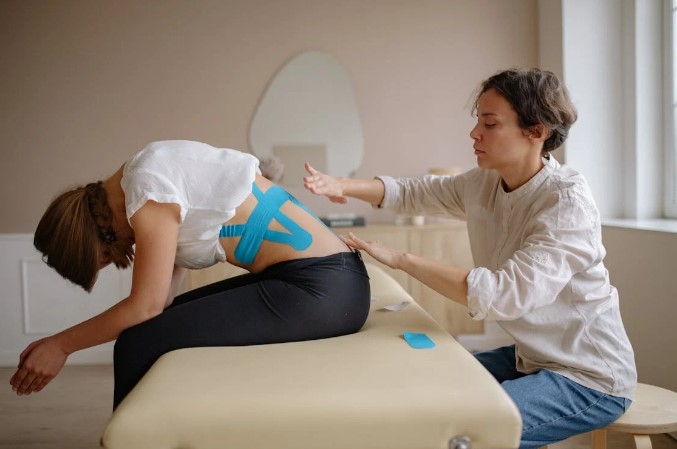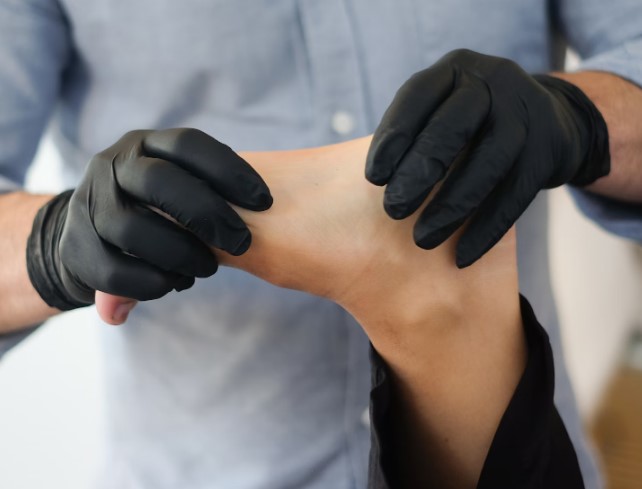How Podiatry Clinics Address a Variety of Foot Issues
The feet and ankles can endure a lot of wear and tear throughout the course of one’s lifetime. They’re also susceptible to numerous ailments that can be difficult to treat without help.
For example, a podiatrist can help alleviate heel pain caused by a condition like Plantar Fasciitis. This condition causes pain from a thick band of tissue that extends across the bottom of your foot, connecting the heel bone to your toes.

Bunions
If your bunion pain becomes severe, it’s crucial to seek professional care. Rouse Hill podiatry clinic, offers comprehensive treatment options, including steroid injections to alleviate inflammation and personalized physical therapy to strengthen your feet and enhance their functionality. Additionally, we provide invaluable guidance on selecting proper footwear to mitigate discomfort
A podiatrist will examine your bunions and determine the best treatment option based on their severity and symptoms. They may recommend nonsurgical modalities, such as padding or orthotics, or surgery.
If your bunion pain gets severe, your podiatrist may prescribe a steroid injection to reduce inflammation. They may also suggest physical therapy to strengthen your feet and improve the way they work together. They will also advise you on how to choose shoes that fit correctly and avoid those with narrow toe boxes.
Flat Feet
The feet support all the weight of your body, which puts them under a lot of stress. When you have flat feet, they fail to distribute your weight evenly, putting more strain on the bones, muscles, and tendons in your legs and lower back. This can lead to foot pain, shin splints, and bunions. Generally, people with flexible flat feet will outgrow the condition, while rigid flat feet can only be corrected through surgery.
An expert podiatrist like Dr Angus Chard can help you find relief from the pain, physical imbalance, and hesitancy to exercise caused by flat feet. They will perform a comprehensive examination including a biomechanical assessment and gait analysis, X-rays, and other imaging tests. They may also recommend orthotics that fit inside your shoes to provide extra support. If you have hypermobility, which is a tendency to move joints beyond their normal range of motion, they can prescribe exercises that will help you regain control of your joints.

Ingrown Toenails
Ingrown toenails are one of the most common foot problems, and can lead to infection in the toe if left untreated. They occur when the edge of the nail grows into the skin around it, usually the big toe. A variety of factors can cause them, including poor or tight-fitting shoes, improper trimming of the nails, fungal infections around the nails, a curved or thick toenail and heredity.
A podiatrist will examine and palpate (press on) the toe, as well as take a sample of the toenail and nail bed and maybe do blood tests and/or x-rays. If the toenail isn’t infected or very painful, they may just trim the corner of the nail to help relieve the symptoms. However, if the toenail becomes infected or recurring issues are present, the podiatrist may need to surgically remove the nail. They may also suggest other treatments, such as a chemical or laser, to prevent recurrence.
Diabetic Foot Care
Diabetes can have serious consequences for feet, causing problems such as neuropathy (nerve damage), vascular disease, arthropathy (joint damage), and ulcers. A podiatrist can help people with diabetes prevent and manage foot problems.
Diabetes patients should have a basic foot check at every health care visit and a comprehensive foot exam at least once a year. These exams should include checking pulses, sensation, and the skin, nails, bones, and joints of the feet. They should report any cuts, bruises, sores, corns, calluses, or other problems to their doctor immediately.
People with diabetes should also wash their feet daily in warm water and dry them completely, avoiding areas between the toes. They should wear comfortable, supportive shoes and socks. They should also keep their feet warm, avoid going barefoot, and promote blood flow by putting their feet up when sitting, wriggling them periodically, getting enough exercise, and using lotions that do not have a drying effect.
Children’s Feet
The feet of infants and toddlers are still developing, which is why they require very careful attention. They have soft bones and muscles, and they are particularly vulnerable to abnormal body forces that cause deformities.
Most foot problems in children are not permanent, but they do need to be addressed as soon as possible. This helps prevent future issues, and can also improve the child’s mobility.
For example, in-toeing can be resolved by changing their sitting or sleeping postures, and podiatrists may prescribe a series of stretches and exercises to strengthen their feet. They can also provide custom orthotics to slip into shoes, which provide additional support and help correct foot alignment.
High Arch
The arch in the front of your foot is designed to absorb and distribute the weight of your feet when you stand and walk. When this structure becomes damaged or misaligned, you can experience a number of foot and ankle problems that may include sharp heel pain, swollen and painful toes and ankles, and stiff calf muscles.
Your podiatrist will conduct a thorough examination of your foot and ankle, then order testing to diagnose your condition. X-rays, MRIs, and nerve conduction studies may be ordered to help pinpoint the cause of your symptoms.
In many cases, your cavus foot can be treated conservatively using shoe inserts and orthotic devices to improve balance and stability. If your condition is caused by an underlying issue such as a spinal cord injury, cerebral palsy, muscular dystrophy, or Charcot-Marie-Tooth disease, surgery to lessen the high arch can be recommended.




